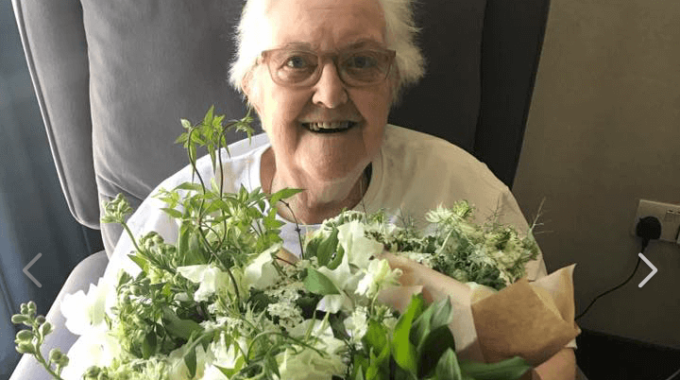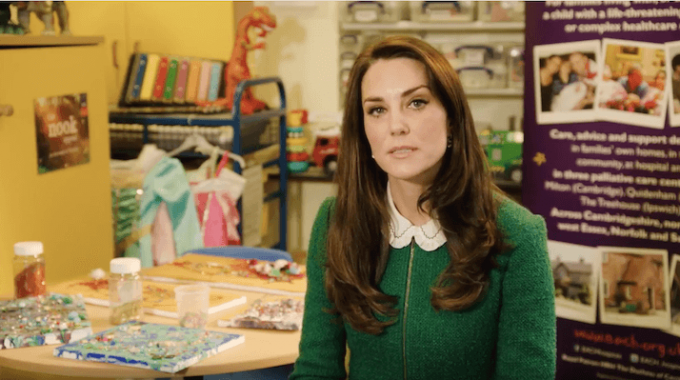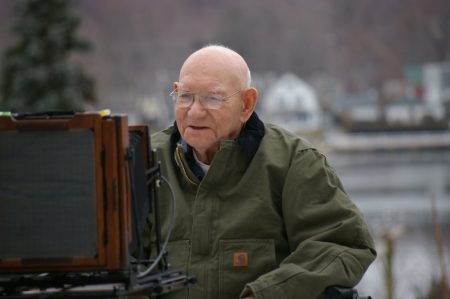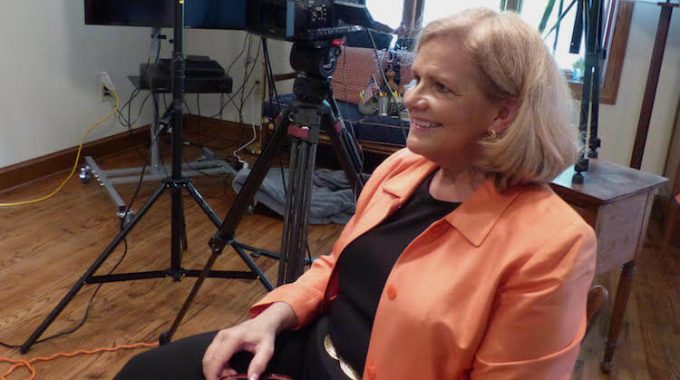
London Hospice Patients Given Gift of Royal Wedding Flowers
Patients at St. Joseph’s Hospice in London received an unexpected gift this month when a large delivery of flowers arrived at their doorstep. These were no ordinary flowers. As staff distributed a beautiful bouquet of green and white to each patient, word quickly spread that the flowers they now held in their hands were the same flowers used in the most recent royal wedding.
“Today we got a very special delivery,” the hospice wrote on their Facebook page with a picture of one of their patients holding a bouquet with a look of utter delight on her face. “Beautiful bouquets made from the #royalwedding flowers which we gave to our patients. A big thank you to Harry and Meghan and florist Philippa Craddock. Our hospice smells and looks gorgeous. Such a lovely gesture.”
The royal family has championed the cause of hospice before on several occasions. Last year, the Duchess of Cambridge Kate Middleton released a video to promote hospice awareness and education. Specifically, the video sought to garner support for the East Anglia Children’s Hospice. She has continued to champion the cause of children’s hospice along with her husband, William.
The recipient of the royal wedding’s flowers, St. Joseph’s Hospice, is one of the leading pioneers of the field. Established at the turn of the last century by the Sisters of Charity, the organization received help early on from the royal family. Queen Alexander and her daughter, Princess Victoria, were among the earliest patrons of the hospice.
In 1958, Dame Cicely Saunders, the most widely recognized figure in modern hospice who is often cited as the founder of the modern hospice movement, began her clinical studies at St. Joseph’s Hospice. It is where she developed her passion for improving the hospice field and begin to dispel the cultural misconceptions about it. Saunders cited her experience caring for an elderly Polish man as the catalyst for her mission to improve hospice care. She saw from firsthand experience how inadequate the old paradigm of hospice was as a form of end-of-life care.
Saunders studied to become a fully licensed physician before beginning her work to improve hospice. It was one of her first strong beliefs: that trained physicians, rather than volunteers and nuns, should be the ones to treat patients in hospice. As a physician, one of the cornerstone concepts she championed, and indeed one which raised much controversy in healthcare circles, was the use of opioids to treat pain in patients with life-limiting illness. Her focus on treating the person rather than the disease meant that she saw no moral conflict in the use of drugs to improve the quality of life of her patients.
For three decades, Saunders disseminated her beliefs through worldwide speaking tours, and a bestselling book titled, On Death and Dying. Her work changed how modern medicine views hospice and end-of-life care. She is often singlehandedly credited with ushering in the modern hospice movement. Her journey, and arguably modern hospice began at St. Joseph’s Hospice.
It is no surprise that St. Joseph’s was chosen to receive the flowers. Their history, their work, and their dedication to charity and compassion make them an example to follow. The royal family, whose donation was also a show of support, will undoubtedly continue to raise awareness for the cause in the future. Their gift was a heartwarming gesture, and one the hospice patients and their families will not forget.





